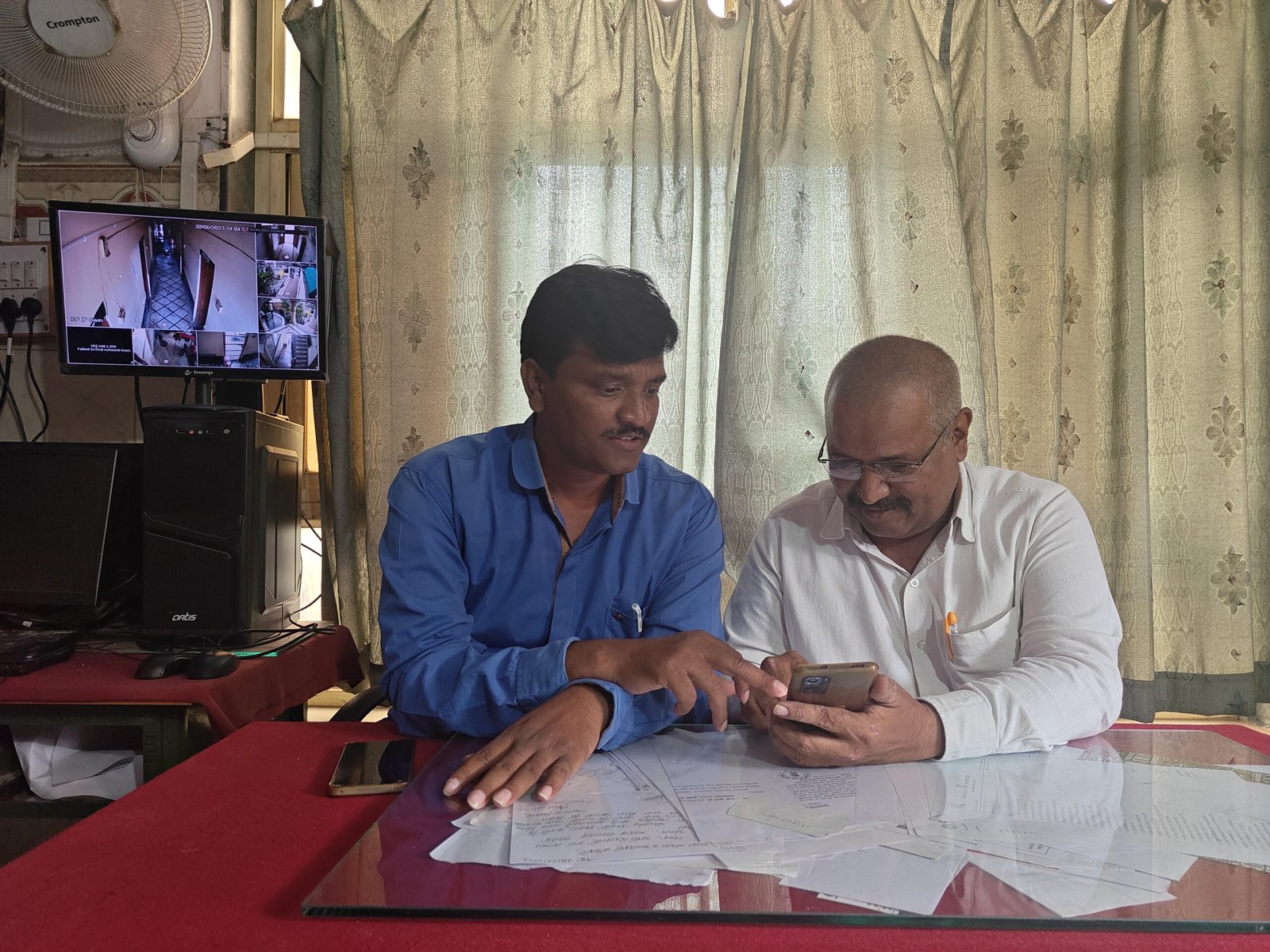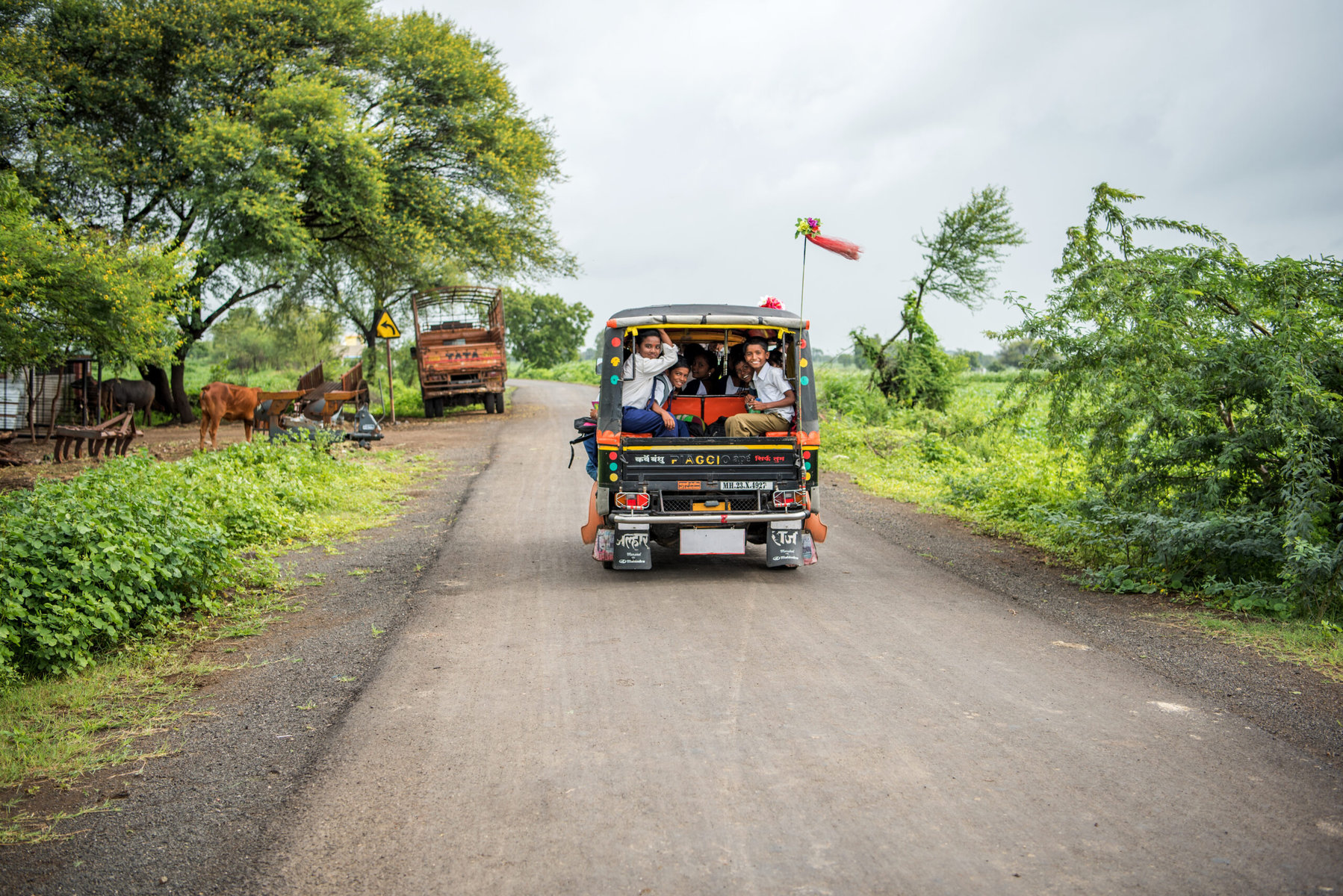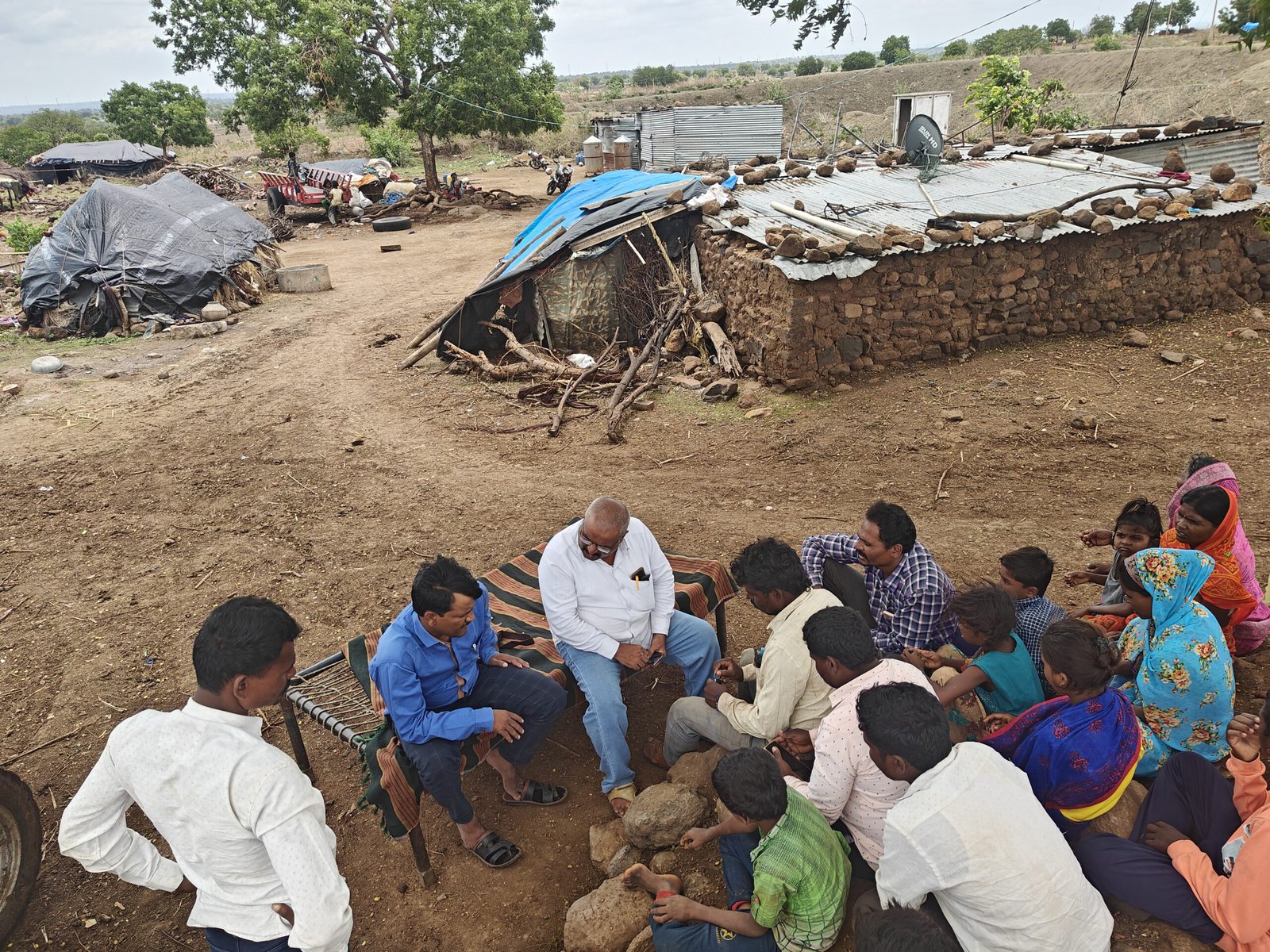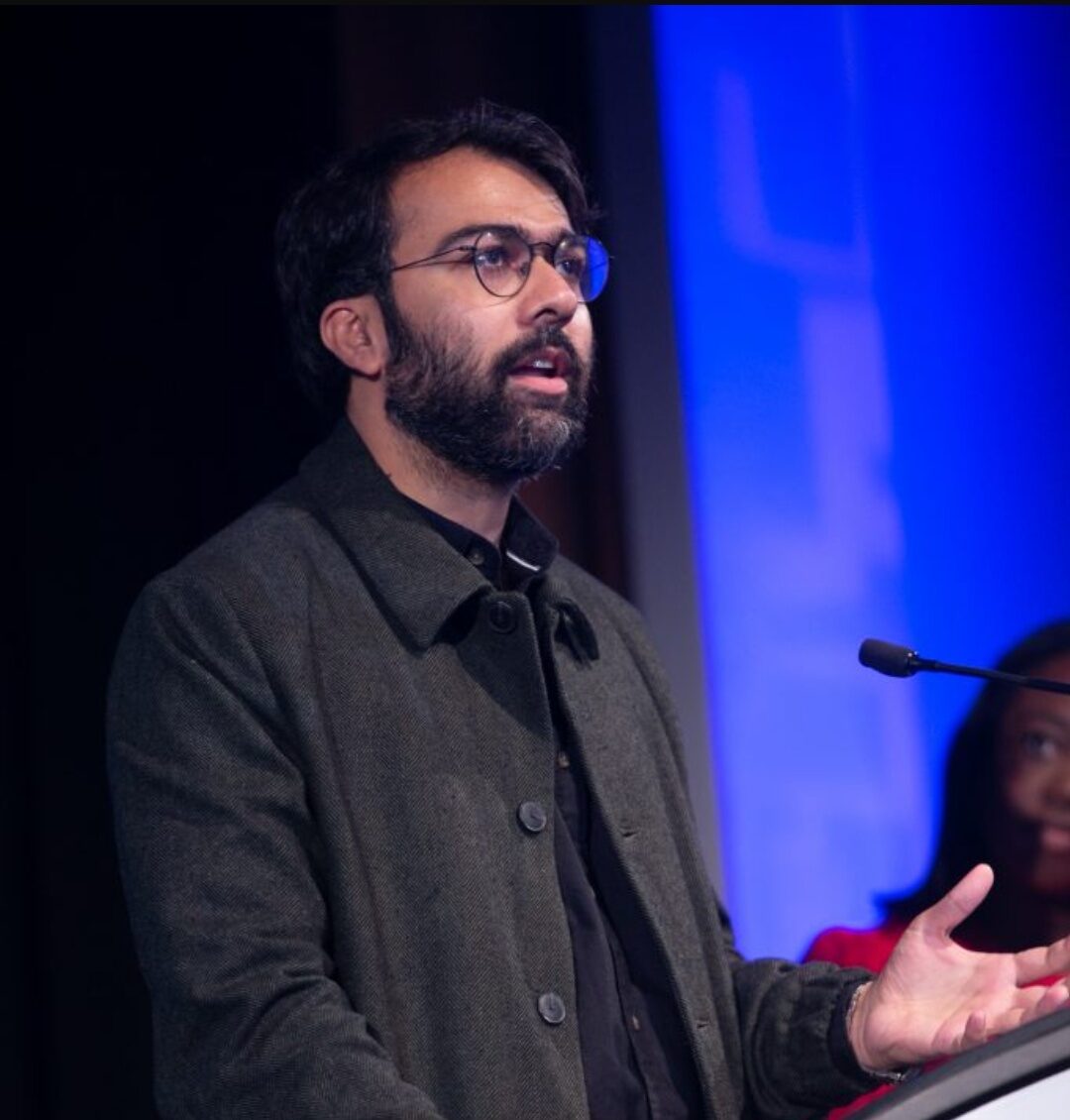On a quiet Monday afternoon in June 2023, Ashok Tangde’s Whatsapp buzzed. A digital wedding card popped up, revealing the young faces of a bride and groom staring awkwardly into each other’s eyes. The card included the time and date of the wedding and the address of the wedding hall.
But it wasn’t exactly an invitation.
The sender was one of Tangde’s informants, who followed it up with the birth certificate of the girl getting married. She was underage, and the wedding was in an hour.
Tangde phoned his colleague and friend Tatwasheel Kamble, and they rushed to the location, which was about half an hour away from where they live. “On our way, we WhatsApped the images to the local police station and the gram sevak [local government official] so we didn’t lose any time,” says Tangde.

Tangde and Kamble are child rights activists in the district of Beed in India’s western state of Maharashtra. Home to three million people, the district is notorious for child marriages.
“Child marriage violates children’s rights and places them at high risk of violence, exploitation, and abuse,” according to UNICEF. “Child marriage ends childhood.”
It can lead to early pregnancy, increasing the chances of maternal mortality and malnutrition. Besides health risks, child marriage jeopardizes children’s education, which can contribute to intergenerational poverty. In most cases, children who marry are pulled out of school. Without the necessary education and skills to land a job that could lift their families out of poverty, they end up working menial jobs.
In the latest report of India’s National Family Health Survey (2019 to 2021), 43.7 percent of women in Beed — nearly double the national average — said they were married before they turned 18, the legal age for marriage in the country.
Weighed down by negative news?
Our smart, bright, weekly newsletter is the uplift you’ve been looking for.The early marriages in Beed are closely linked to India’s bustling sugar industry. The country is now the largest sugar producer in the world, after overtaking Brazil last year.
Beed is an epicenter of sugarcane cutters. Every November, tens of thousands of people migrate hundreds of kilometers to spend six months in the Maharashtra region, chopping sugarcane in exchange for a mere total of $350.
The contractors who recruit workers prefer to hire married couples as the job requires two people to work in tandem — one to chop the cane and the other to bundle and load it onto the tractor. The couple is treated as one unit, which makes payment easier and avoids conflict between non-related workers. Children are easy prey because they are non-confrontational and also bring in extra income to poverty-stricken homes.
In June, when Tangde and Kamble reached the wedding hall, the gram sevak and the police had already arrived. The celebration devolved into confusion as it dawned on the adults that a police case could potentially be in the offing. The families fell onto the feet of the police, pleading for forgiveness.
“Most of the families are forced into it out of desperation to survive,” says Tangde. “For the groom’s family, it opens up an extra source of income. For the bride’s family, there is one less stomach to feed.”
About 15 years ago, Tangde began to meet female sugarcane cutters with his wife, activist Manisha Tokle, whose work centers around helping women in the sugarcane industry. “I realized that they had all gotten married in their early teens, or even before that,” he says.

Tangde and his work partner, Kamble, built a network of people who eventually became their “informants.” A wide range of people fit under that umbrella. An informant could be a boy in the village who has a crush on the girl getting married, a distant relative, a school teacher or even a social worker — anyone who understands that child marriage is a crime.
Over the years, the two activists have cultivated a network of over 2,000 informants across the district who have helped them blow the whistle on over 4,500 child marriages in Beed in 10 years.
They attribute much of their success to the popularity of WhatsApp in rural India.
“Earlier, we could only stop a child marriage when there was enough time to gather the required papers,” says Kamble. “The penetration of WhatsApp has allowed us to circulate the necessary documents and mobilize people even at the last minute.”
With WhatsApp, Kamble says, the informant takes a picture of the document and sends it across. If they don’t have a document, he says, they share the school where the girl studies, so Tangde and Kamble can contact the principal and ask for the school certificate. “That way, the informants remain anonymous,” Kamble explains.
Before WhatsApp, Tangde says, the birth certificate or school certificate had to be physically delivered after making necessary copies, which was both time-consuming and risky for the informant. “The word would get out and we would lose time,” he says. “If a person from the village is outed as an informant, people can make their life hell.”
Once the child marriage is stopped, a police case is registered against the adults behind the marriage and the Child Welfare Committee takes the underage girl under protection.
The committee counsels the girl and her parents on the importance of education and the perils of child marriage. If the committee members are satisfied with the family’s response, the girl reunites with her family and is able to go back to school. To prevent the girl from getting remarried, the committee members ask her teachers to keep an eye out for her, and the parents are told to update the local police station once a month.

In 2020, the outbreak of Covid-19 proved a serious hurdle to Tangde and Kamble’s work. The lockdown, enforced by the government, closed schools and colleges for an extended period of time, keeping kids at home — and exacerbating the crisis of child marriages.
In Beed, Tangde knew that underage girls were being rampantly married off in small ceremonies in the villages, making it impossible to track them.
In the first week of June 2023, Tangde received another tip about a child marriage happening in a remote, hilly village of Beed.
When the authorities busted the marriage, they realized that this was the girl’s third marriage. Both the previous marriages had happened during the first two years of the Covid-19 pandemic and hadn’t worked out because the husbands were abusive. The girl was 17.
All that her mother, Vijaymala, wanted was for her daughter, Laxmi, to stay away from her father, she explains. Vijaymala’s husband would often come home drunk and beat up his wife. When Laxmi intervened, he beat her up too.
Laxmi has been out of school and looked after the house for three years now. “I don’t have the confidence to go back to school,” she says.
Tangde suspects that immediately after Laxmi turns 18, her mother will arrange her marriage yet again. But it might not be that easy because a girl with two failed marriages and one that didn’t go through is looked at with suspicion in the society. “Nobody questions the men she was married to,” Tangde says. “That is why we are seen as people who disrupt a marriage and ruin the girl’s reputation. We have been assaulted, insulted and threatened.”
But there are also experiences that make it all worthwhile — including cases when the parents have realized their mistake.
In early 2020, Tangde stopped a child marriage of a 17-year old girl. She had just finished her 12th standard (secondary school), and her poverty-stricken father — a sugarcane cutter — decided it was time to marry her off. But the two activists were tipped off about the wedding and stopped it. It was one of the few they had stopped since the outbreak of Covid-19.
In May 2023, the father of the girl walked up the stairs of Tangde’s office in Beed. For a minute, Tangde didn’t recognize him. The father introduced himself and told Tangde he had waited for his daughter to graduate before setting up her marriage. The boy was approved only after she agreed.
He thanked Tangde for his service and handed over a box neatly wrapped in a gift paper. For once, Tangde had received a wedding card — and it was an invitation.
Names of the children and their relatives have been changed in the story to protect their identities.
This story was produced with the help of Thomson Reuters Foundation. The content is the sole responsibility of the author and the publisher.












